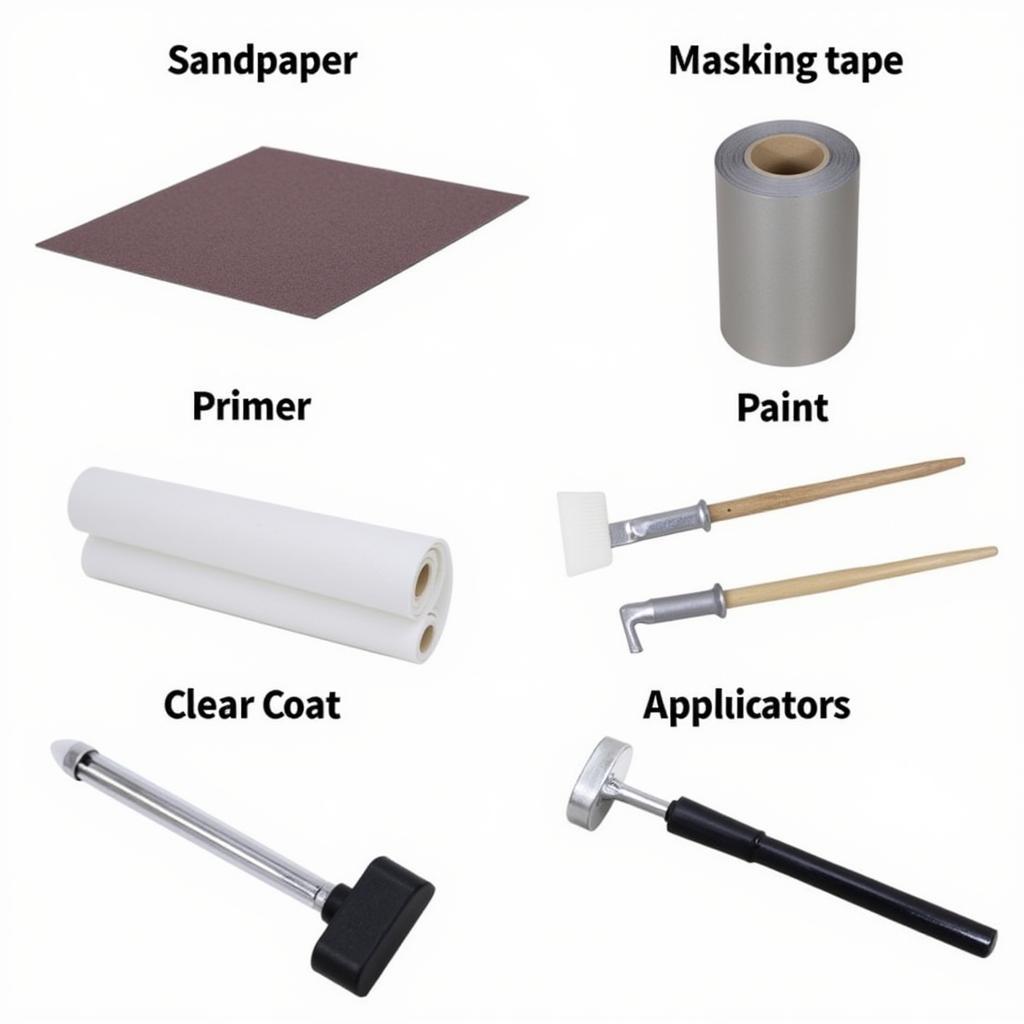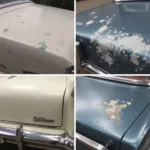DIY car body paint repair can seem daunting, but with the right knowledge and tools, you can achieve professional-looking results and save money. This guide provides a step-by-step approach to tackling those unsightly scratches, chips, and scuffs, restoring your car’s finish to its former glory.
Understanding the Basics of DIY Car Body Paint Repair
Before diving into the repair process, it’s crucial to understand the different types of car paint damage. Minor scratches often only affect the clear coat, while deeper ones can reach the base coat or even the primer. Knowing the extent of the damage will help you choose the appropriate repair method. For very minor scratches, a simple car scratch remover might be sufficient. Deeper damage, however, may require sanding, priming, and painting. This is where a car body paint repair kit can be invaluable.
Choosing the right paint is also essential. You’ll need to match the color precisely to achieve a seamless repair. Check your car’s owner’s manual or the sticker located inside the driver’s side doorjamb for the paint code.
After prepping the area, apply the paint in thin, even coats, allowing each coat to dry completely before applying the next. Patience is key here, as rushing the process can lead to drips and an uneven finish.
Remember, safety first! Always wear appropriate safety gear, such as gloves and a respirator, when working with car paint and related chemicals. Check out our car body paint repair diy guide for more detailed information.
Step-by-Step Guide to DIY Car Body Paint Repair
- Clean the Damaged Area: Thoroughly wash the area with soap and water, then degrease it with a wax and grease remover. This ensures proper adhesion of the repair materials.
- Assess the Damage: Determine the depth of the scratch or chip. For minor scratches, you might only need to polish the area. Deeper scratches require sanding, priming, and painting.
- Sand the Area (if necessary): Use fine-grit sandpaper to smooth the damaged area and feather the edges. This creates a smooth transition between the repaired area and the surrounding paint.
- Apply Primer (if necessary): If the scratch has reached the primer or metal, apply a thin coat of automotive primer to the sanded area. Allow it to dry completely. A car body paint scratch repair pen can be useful for smaller chips and scratches.
- Apply Paint: Using a spray gun, paintbrush, or touch-up pen, apply thin, even coats of paint to the damaged area, allowing each coat to dry completely before applying the next.
- Apply Clear Coat: Once the paint is dry, apply a few coats of clear coat to protect the paint and give it a glossy finish.
- Wet Sand and Polish: After the clear coat has cured, wet sand the area with very fine-grit sandpaper to remove any imperfections. Then, polish the area to restore its shine. For more detailed instructions on fixing cracked paint, see our guide on paint crack repair car.
Common Mistakes to Avoid
- Rushing the Process: Patience is crucial for a successful DIY car body paint repair. Allow ample drying time between each step.
- Using the Wrong Paint: Make sure you use the correct paint code for your car.
- Applying Too Much Paint: Multiple thin coats are better than one thick coat.
- Not Properly Preparing the Surface: Thorough cleaning and sanding are essential for proper adhesion.
- Ignoring Safety Precautions: Always wear appropriate safety gear. You can find a suitable kit, like the dupli color body paint repair kit car scratch remover, at most auto parts stores.
Conclusion
DIY car body paint repair can be a rewarding experience, saving you money and restoring your car’s appearance. By following these steps and avoiding common mistakes, you can achieve professional-looking results. Remember to always prioritize safety and take your time for the best outcome. Don’t hesitate to explore our car body paint repair guide for further guidance.
FAQs
- How long does it take for car paint to dry? Drying times vary depending on the type of paint and environmental conditions, but generally, allow at least 24 hours for the paint to fully cure.
- Can I repair a dent myself? Minor dents can sometimes be repaired using DIY methods, but larger dents often require professional attention.
- What is the best way to remove scratches from car paint? The best method depends on the depth of the scratch. Minor scratches can be removed with polishing compound, while deeper scratches require sanding, priming, and painting.
- What type of sandpaper should I use for car paint repair? Start with a coarser grit (e.g., 1500-grit) for initial sanding and progressively move to finer grits (e.g., 2000-grit or higher) for smoothing and polishing.
- How do I match my car’s paint color? Your car’s paint code can be found in the owner’s manual or on a sticker located inside the driver’s side doorjamb.
Common Scenarios for DIY Car Body Paint Repair
- Scratches from parking lot mishaps: These are often minor scratches that can be addressed with polishing or touch-up paint.
- Stone chips on the hood or bumper: These small chips can be repaired using a touch-up pen or a car body paint repair kit.
- Scuffs from minor collisions: Depending on the severity, these may require sanding, priming, and painting.
For further reading, explore articles on our site about topics such as a car body paint scratch repair pen.
Need more assistance? Contact us via WhatsApp: +1(641)206-8880, or Email: [email protected]. Our customer service team is available 24/7.



